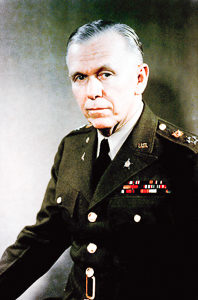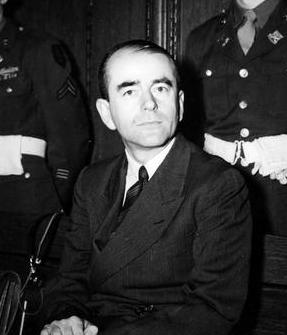I like a good conspiracy theory as much as anyone—as long as it makes sense. I believe President Kennedy was killed by multiple gunmen who were likely paid by the mob. I don’t believe the conspiracy theory that Adolph Hitler escaped to South America.
I suppose I should point out that the subject of today’s blog post could realistically be classified as a conspiracy theory since there isn’t any verifiable official documentation to substantiate its claims. However, this is one of those theories that might have some backbone based on circumstantial evidence.
Did You Know?
Here’s a question to test your knowledge about World War II:
Which countries did the United States formally declare war against after the Japanese bombed Pearl Harbor on 7 December 1941?
(a) Germany, France & Japan
(b) Grand Fenwick, Elbonia & Lilliput
(c) Japan, Germany & Italy
(d) Australia, New Zealand & Russia
The Woodrow Wilson National Fellowship Foundation did a survey of American citizens with questions taken from the U.S. Citizenship Test. Sixty-percent failed to identify the three countries in the above question (I made up three of the four; obviously, the third choice or, C is the correct answer). Additionally, only 13% knew when the U.S. Constitution was ratified, 57% couldn’t say how many justices sat on the U.S. Supreme Court, and only 24% could identify something Benjamin Franklin was famous for—37% thought he invented the light bulb.
I will leave any conclusions up to you.
The American Marshall Plan
As a backdrop, let’s look at the Foreign Assistance Act of 1948 also known as the Marshall Plan. Approved by President Harry Truman and Congress in April 1948, it was named after General George C. Marshall, arguably one of Roosevelt and Truman’s best advisors (General Marshall was Truman’s Secretary of State when he pushed for the draft and approval of the plan). The goal of the Marshall Plan was to simply aid Western and Eastern European countries with economic assistance to rebuild their infrastructures. Listen to General Marshall’s Harvard speech in 1947 here.

Truman and Marshall had two overriding reasons to see this plan approved: first, they saw it as an investment in Eastern European countries as a way to thwart Soviet influence (Stalin ultimately refused to accept any American money for his satellite countries) and second, Marshall was keenly aware of the ramifications from World War I and the Versailles Treaty when the victors demanded unrealistic reparations without assisting Germany to get back on its feet.
The Marshall Plan operated for four years with aid totaling $17 billion or more than $194 billion in today’s dollars. It was replaced at the end of 1951 with the Mutual Security Plan which donated $7 billion on an annual basis. This lasted until 1961 when that plan was replaced by another economic assistance program.
The Marshall Plan was extraordinary in its vision to the future. It is highly probable that the only reason Europe recovered so quickly (not only its infrastructure but also its economy) after such a devastating war was because of American assistance—seventy years later, Germany has the strongest economy in the EU.
However, there is a strong possibility that before the war ended, the Nazis recognized the same thing about Germany and its need for post-war assistance. In their minds however, it would be former Nazis who would plan for the rebirth of Germany with the intent to wait for the Fourth Reich to rise from the ashes.
German Industrialists
It is no secret that most of Germany’s most powerful industrialists supported Hitler and the Nazi regime. Hitler gave a speech to the Industrialist Club on 27 January 1932 as he was running for the presidency in the March 1932 elections. This speech impressed those in attendance and the future Führer immediately gained the support of many German industrialists. Hitler came in second behind the incumbent president, Paul von Hindenburg. However, Hindenburg was persuaded by Hitler’s friends to appoint him chancellor on 30 January 1933. One month later, Hindenburg suspended German citizens’ civil liberties and Hitler began his march to dictatorship and his quest for the Thousand Year Reich, not to mention his place in history as the greatest mass murderer. Read More The Nazi Marshall Plan

